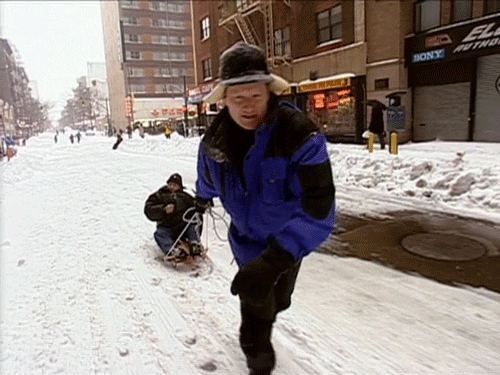Best Tool For Speed Training
FREE SPEED & POWER WORKOUT!
Download by entering below

Are Sleds The Best Tool For Speed?
One of the most frustrating things as a coach is lining up all of the training to get the athlete to be the absolute best freak of nature ever. The athlete has all the weight room numbers but gets on the field and they’re slow. As a coach, you start to see the athlete doesn’t have a motor and struggles to apply that horizontal force to run quickly.
To improve speed we have to think about exercises we can use in the weight room, what different tools we can use, technique work we can provide, and that all starts to bring up other areas to work with like room, length of running surface, and the implementation of cues at high speeds. Some athletes lack the coordination or proprioception for their body to learn.
So is there a tool that can be used to increase speed?
Speed
We are going to look at speed as a measurement of a rate of motion. In other words, the measurement of how someone is moving over a given distance. We have to understand how to get someone moving from a static position, starting to move, to accelerating as quickly as possible. An athlete needs to have some overcoming strength to get kinetic out of the static start position and then they need a very high rate of coordination to be able to accelerate to get from zero to top speed. The outcome we are looking for is how to get from zero to top speed as quickly as possible.

Acceleration
Think of a car with a stick shift. We want that car in standard transmission to be able to quickly get from first to fifth gear and then when in fifth gear get to the top speed of the vehicle. That’s acceleration in a nutshell.
With sport, we are really going to be training when thinking of speed and its transfer to sport is acceleration. It is about getting to top speed fast.
Max Speed
With human beings, we think of max speed often in terms of slowing down the slowest. Basically, how long can the athlete hold their posture to be at max speed, be efficient, and keep the glycogen stores feeding the movement. It is a very short time frame that max speed actually has an impact on athletes. That is why we focus on acceleration when it comes to sport.
Transient Speed
Transient speed is a topic we use at Garage Strength.
Transient speed is known as the speed an athlete needs to carry over to and from multiple different sports. It is a means of identifying agility. Think about the example of Jordan Burroughs shooting a double leg. Think about a running back hitting the hole and juking a linebacker. Think of a basketball player crossing up a defender and exploding toward the rim. The sporting world doesn’t really have an identification for this type of speed. Yes, we know these athletes are fast, but we haven’t put a term on it to train this type of speed (transient speed) universally through different means of training.
Transient speed is what transfers to all different sports, especially in the open-skill arena of athleticism. We see athletes being fast but not in the traditional sense of running with acceleration to top end speed. We see athletes being fast in sport as a carry over of transient speed.
Even when we are discussing transient speed, we want to look at the simple force application. Having an athlete who needs to go from point A to point B in a very short time frame, then step back and go to point C, we see transient speed in action. As we look through this we have to think about what is needed. Typically when looking through speed on a track we see horizontal projection/force and we also see vertical force. Transient speed does have vertical force, but most of our focus needs to be on horizontal force in a short box, timeframe, and distance.
We need to look for specific exercises and tools that will train the horizontal force output and can lead to improving the physical output and efficiency of the individual. Enter the resisted sled.

The Sled
When I first entered the training world for sport, there was an impression that sleds were good but could make you slower because they could hinder technique. The downfall of that is most people don’t even know how to run so it doesn’t really hold true, lol.
But why the sled?
First, there is less breaking force. There is less breaking force because of the resistance behind the individual. It is easier to execute cues and it is a little bit easier to execute technical work being looked for.
Second, there is a greater amount of horizontal application of force. The load behind the athlete creates a steeper shin angle and has the chest leaning forward which forces the body to focus on the horizontal force production. Horizontal force production is pivotal to acceleration.
Third, the athlete will have greater ground contact time because they have a sled behind them. The greater ground contact time teaches an athlete’s body to learn propulsive force by applying more force into the ground to travel forward. The athlete is learning how to propel themselves forward more effectively.

Resistant Sled Work: Loading
The resistant sled can drastically increase acceleration.
Based on the research, anywhere from 10% to 42% body mass on the sled has created a positive reaction for athletes doing sled based work. For instance, a 200 lbs athlete towing a 20 lbs sled for six sets of 20 yard resisted sprints will see an increase in acceleration over time. I believe that using body mass as a guide is not the best because it doesn’t factor in specific strength and muscle twitch types. Body mass is a simple baseline that can be used when just beginning to figure things out.
The best way to use a sled is to figure out a velocity decrement.

Velocity Decrement
A velocity decrement is based on an unresisted sprint. For instance, say you run a 20 meter sprint and run it in 2 seconds and we want to create a half-speed decrement, we need to put a load on the sled that slows the athlete down to half speed. The exact calculations can feel like calculus sometimes but math is no reason to slow down applying the concept of velocity decrement. The use of the velocity decrement and the use of the formula allow us to determine for specific athletes what amount of weight needs to be on the sled. Some athletes may need 50 lbs on the sled to slow them down by half while other athletes might need 20 lbs on the sled to slow them to the desired decrement.
In most cases, we want to see resistant sleds based around a dynamic day or based around a day in and of itself. We use a day known as an athlete day. I feel athlete day is a great day to put in resisted sled sprints with velocity decrement applications as a number one or number two exercise. If not applicable on athlete day, which is day 3 in our programming model, put it in for day 4, a dynamic day, as a replacement for technical coordination or make it the entire dynamic focus. The resisted sled will lead to an increase in acceleration and often improve the starting position.
Recap
A lot of athletes struggle with horizontal force application. We know that athletes don’t coordinate and produce force rapidly when they struggle to apply the cues of “Go faster!” Thankfully sled training forces the timeframe to lengthen by causing more ground contact time and helps slower individuals to increase their mechanics while feeling how to drive more effectively. Now for elite athletes or more coordinated athletes, resistance sleds will benefit as well based upon how they utilize velocity decrement measuring tools to load the sled to reap the benefits of increased acceleration and overall speed.
Related Posts
Blog Topics

Yo, It's Dane
Welcome to the Garage Strength Blog, where it is my goal to provide you with the experience and knowledge I've gained in the strength and conditioning world over many years of learning from both successes and failures. I train elite-level athletes in a multitude of sports from the high school to professional levels, already producing 5 Olympics and 30+ National Champions. If you want to be the next champion I train, check out my strength programs below!
Start Training With Me

Join for free educational videos EVERY WEEK on strength coaching and athletic performance



